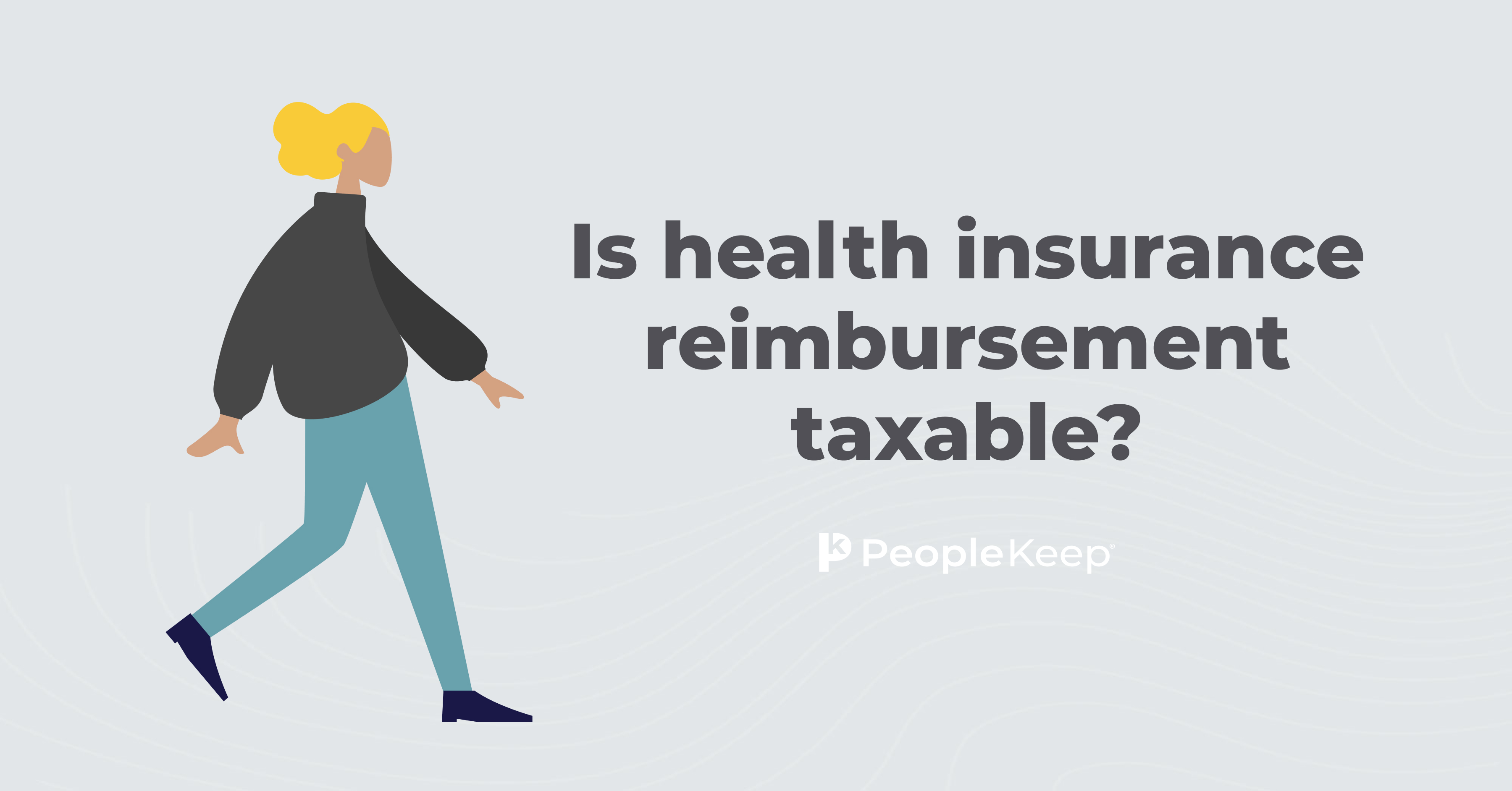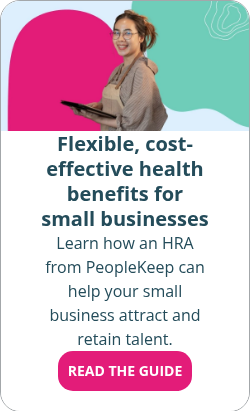Guide to tax withholdings for stipends and fringe benefits
By Chase Charaba on December 3, 2024 at 9:34 AM
If you want your organization to stand out to job seekers, providing attractive benefits can make a difference. Offering a comprehensive employee benefits package is a great way to recruit and retain workers.
Many employers looking to enhance their benefits are turning to employee stipends and fringe benefits. But, as with any employee benefit, you need to know how to manage these perks, including understanding their taxability.
In this article, we'll explain tax withholdings for fringe benefits, whether employee stipends are taxable income, and how to administer compliant employee perks.
In this blog post, you'll learn the following:
- The difference between pre-tax, taxable, and non-taxable benefits
- The diverse range of stipends available for your employees.
- How a benefits administrator can simplify the process of providing these perks to your team.
What is a fringe benefit?
Before we cover tax withholdings, let's explain what a fringe benefit is.
Fringe benefits are a form of indirect compensation you provide to your employees in addition to their regular salary or wages. They can help offset the cost of work, travel, and living expenses. You can also use them to support at-home internet access, professional development, and recognition programs.
While the term “fringe benefits” is commonly used to refer to all employee benefits, the Internal Revenue Service (IRS) only categorizes certain perks as fringe benefits. The IRS lists these in IRS Publication 15-B1.
Difference between pre-tax, taxable, and non-taxable benefits
You must understand the difference between pre-tax, taxable, and non-taxable benefits. For this section, we're referring to federal tax regulations only. Some states or local jurisdictions may have additional tax rules.
What are pre-tax benefits?
Pre-tax, or tax-advantaged benefits, are specific benefits that the IRS regulates. These benefits often provide an immediate tax break to employers and employees.
Employers often deduct contributions toward tax-advantaged benefits from an employee's paycheck before taxes. These contributions aren’t counted toward the employee's total taxable income amount. It's important to note that not all pre-tax benefits work this way. Some benefits, such as adoption assistance, are exempt from federal income tax but not from Social Security, Medicare, or FUTA taxes.
Examples of pre-tax benefits include:
What are non-taxable benefits?
Non-taxable benefits are business expenses you can reimburse without paying federal or state taxes. These differ from pre-tax benefits because you generally don't report them on your employees' W-2s. This is often the case with de minimis benefits2.
There are also non-taxable benefits, like health reimbursement arrangements (HRAs). An HRA is an employer-funded health benefit, so there are no employee contributions or paycheck deductions. However, they do come with regulations, such as contribution limits. Since an HRA can be too complicated for many organizations to manage on their own, some employers use a benefits administrator to help.
What are taxable benefits?
According to the IRS, any employee benefits not listed as pre-tax or that you can't designate as non-taxable are taxable. This means that you must include the value of these benefits as part of your employees’ taxable income on their Form W-2. You also have to withhold state and federal taxes.
Are stipends taxable?
Providing annual, quarterly, or monthly stipends to employees can be an excellent flexible benefit. The IRS considers most employee stipends as taxable benefits. However, certain types of stipends, such as commuter or education benefits, may be tax-free up to the IRS-designated annual contribution limits. To offer these stipends on a tax-free basis, you must establish an accountable plan and follow IRS guidelines.
Some of the most popular taxable stipends are:
- Wellness stipends
- Health stipends
- Remote work stipends
Wellness stipends are taxable benefits given to employees to help cover their wellness expenses. Employers can offer them as a benefits card, such as a lifestyle spending account (LSA), or through an expense reimbursement. A wellness stipend can cover the cost of gym membership fees, fitness classes, home exercise equipment, wellness mobile apps, and more.
You can also offer your employees a health stipend. Health insurance stipends are taxable alternatives to an HRA or a group health insurance plan. With a health stipend, you can give your employees money for their medical expenses, including mental healthcare. You can also offer them to your 1099 contractors and international employees. Perhaps the greatest advantage is that stipends can be used to provide a health benefit to employees who receive premium tax credits for Marketplace coverage without disrupting access to those subsidies.
However, larger organizations with 50 or more full-time equivalent employees (FTEs) may want to reconsider offering a stipend instead of a formal benefit. That’s because a health stipend doesn't meet the Affordable Care Act's employer mandate. This could open your business up to hefty tax penalties.
Instead, you can offer a tax-free individual coverage HRA (ICHRA). This allows you to reimburse your employees for their individual health insurance premiums and other out-of-pocket expenses.
Because a taxable stipend is a form of additional compensation, employers are responsible for payroll taxes, while employees could owe additional taxes on their annual tax returns. You have two options for stipends: withhold taxes on the value of the benefit or add them to regular wages.
All fringe benefits you add to regular wages, including stipends, are taxed at the employee's regular income tax rate. If an employer doesn’t add the value of the stipend to regular wages, they can withhold 22% of the value. This is the flat supplemental wage rate. According to the IRS, the 22% flat rate can apply to all supplemental wages if your employee earns less than $1 million annually. Otherwise, employers must use a 37% flat rate2.
Which benefits are taxable?
Refer to the chart below for a quick overview of which popular employee benefits are considered taxable or tax-exempt concerning employment taxes.
You should always consult with IRS Publication 15-B1 and your tax professional to determine proper federal income tax withholding for your organization.
|
Fringe benefit |
Federal income taxability |
Social Security & Medicare taxability |
|
Accident and health benefits |
Tax-free. |
Tax-free. |
|
Achievement awards |
Tax-free up to $1,600 for qualified plan awards and $400 for nonqualified awards. |
Tax-free up to $1,600 for qualified plan awards and $400 for nonqualified awards. |
|
Adoption assistance |
Tax-free up to $16,810 annually. |
Tax-free up to $16,810 annually. |
|
Archer medical savings accounts (MSAs) |
Tax-free for qualified medical expenses. |
Tax-free for qualified medical expenses. |
|
Athletic facilities |
Tax-free if it is only used by employees and their families and is operated by the employer. |
Tax-free if it is only used by employees and their families and is operated by the employer. |
|
Bicycle commuter reimbursement |
Taxable. |
Taxable. |
|
Commuter benefits |
Tax-free up to $340/month for transit passes or commuter highway vehicles in 2026. Up to $340/month for parking.3 |
Tax-free up to $325/month for transit passes or commuter highway vehicles. Up to $325/month for parking. |
|
De minimis benefits |
Tax-free. |
Tax-free. |
|
Tax-free. |
Tax-free. |
|
|
Dependent care assistance |
Tax-free up to $5,000 (or $2,500 for married employees who file separately). |
Tax-free up to $5,000 (or $2,500 for married employees who file separately). |
|
Disability insurance |
Tax-free if for loss of bodily function or limb. Otherwise, employees pay income taxes. |
Tax-free if for loss of bodily function or limb. Otherwise, employees pay income taxes. |
|
Educational assistance |
Tax-free up to $5,250/year per employee. |
Tax-free up to $5,250/year per employee. |
|
Employee discounts |
Tax-free up to 20% of the normal price. Real estate, investments, or items unavailable to customers are taxable. |
Tax-free up to 20% of the normal price. Real estate, investments, or items unavailable to customers are taxable. |
|
Employee stock options |
The stock option price discount is taxable upon qualifying disposition of stock. |
N/A |
|
Employer-provided cell phones |
Tax-free if provided for business reasons. |
Tax-free if provided for business reasons. |
|
Flexible spending account (FSA) |
Tax-free. Health FSAs are tax-free, up to $3,400 for salary deferrals and $680 for rollover amounts in 2026. |
Tax-free. Health FSAs are tax-free, up to $3,400 for salary deferrals and $680 for rollover amounts. |
|
Group-term life insurance coverage |
Tax-free. |
Tax-free up to $50,000 of coverage |
|
Health insurance |
Tax-free. |
Tax-free. |
|
Health savings account (HSA) |
Tax-free up to contribution limit, including employer contributions. In 2026, contribution limits are $4,400 for individuals and $8,750 for families. |
Tax-free up to contribution limit. |
|
Health stipend |
Taxable. |
Taxable. |
|
Health reimbursement arrangement (HRA) |
Tax-free for qualifying medical expenses if the employer has qualifying health insurance with minimum essential coverage (MEC). |
Tax-free for qualifying medical expenses if the employer has qualifying health insurance with minimum essential coverage (MEC). |
|
Lodging on-premises |
Tax-free if lodging on the business premises is a condition of employment. |
Tax-free if lodging on the business premises is a condition of employment. |
|
Retirement planning services |
Tax-free. |
Tax-free. |
|
Vision insurance |
Tax-free. |
Tax-free. |
|
Wellness stipends |
Taxable. |
Taxable. |
It's important to remember that any cash payment or gift card given to employees is always deemed a taxable benefit, regardless of the amount.
How to administer a compliant taxable employee stipend
If you've elected to offer your employees taxable benefits, you need to be sure you're correctly administering your benefits.
The IRS requires employers to determine the value of fringe benefits by January 31 of the following year. You'll have to estimate the amount before then. For employee stipends, this should be the total amount of the stipends paid out.
There are two standard options for remaining compliant with taxable benefits:
- Provide employees with a 100% reimbursement. Then you can withhold taxes later on their W-2 using imputed pay. For this value, use your employees' regular income tax withholding rate4 or the standard federal income tax rate of 22%. You'll also need to withhold Medicare, Social Security, and FUTA taxes
- Treat the fringe benefit's value as a bonus for the payroll cycle and withhold all applicable taxes
How to administer a compliant tax-free employee health benefit
A health stipend might seem like the easiest way for small businesses to offer a health benefit. However, other options, like HRAs, are also affordable, flexible, and easy to administer with the right support.
While pre-tax benefits are exempt from federal taxes as long as they remain compliant, they require additional work to ensure that you comply with the additional IRS and federal regulations.
For example, you'll need to ensure that employees submit substantiation for their medical reimbursements with an HRA. This includes receipts, bills, or doctor's notes, depending on the qualified expense. Additionally, health benefits will subject your organization to HIPAA and other privacy regulations.
Using a benefits administration software like PeopleKeep can help your HRA remain compliant.
When you work with PeopleKeep, our team of experts will:
- Review employee reimbursement requests for eligible expenses
- Generate legal plan documents
- Automatically send necessary notices on your behalf
- Provide award-winning customer support
Plus, your employees can easily browse and select health plans straight from their PeopleKeep account. There's no need for them to deal with health insurance companies directly or tackle the Health Insurance Marketplace all on their own. With our user-friendly shopping experience, they can find a health insurance policy that suits their needs.
Conclusion
Understanding pre- and post-tax fringe benefits helps you provide suitable options for your organization. Pre-tax benefits lower employees' taxable income and save costs, while taxable benefits tend to be simpler to manage. No matter which benefits you choose to offer, remaining compliant allows you to avoid costly penalties from the Internal Revenue Service (IRS).
If you're interested in offering a tax-free health benefit, PeopleKeep can help! Our HRA administration software makes it easy to manage your benefit in minutes every month. Schedule a call with one of our HRA specialists to learn more.
PeopleKeep doesn’t provide tax or legal advice. The content in this article is for educational purposes only. You should consult with your legal or tax advisor to determine the proper steps for your organization.
Check out more resources
See these related articles

Is health insurance reimbursement taxable?
Health insurance reimbursement can be tax-free for your business and your employees. Explore the tax differences between HRAs and healthcare stipends.

Can I reimburse employees for health insurance?
Learn about the two most common ways to compliantly reimburse employees for their healthcare: taxable stipends and health reimbursement arrangements (HRA).

Does QSEHRA disqualify employees from individual premium tax credits?
Learn how a QSEHRA affects premium tax credits. Understand if employees can still qualify for tax credits when offered a QSEHRA by their employer.



